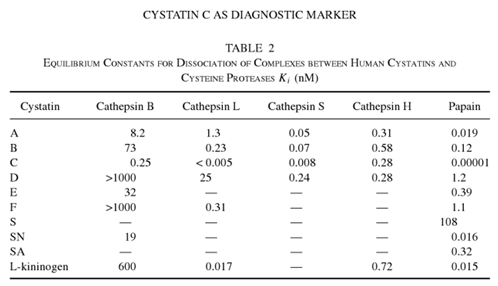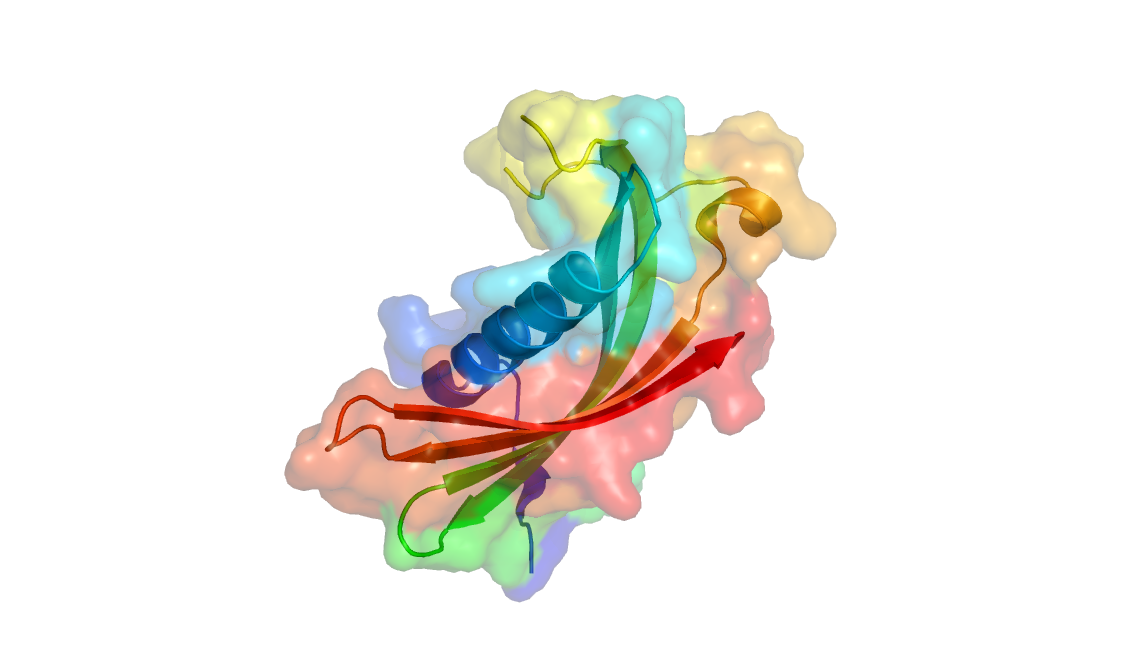Team:Brasil-SP/Project/Cystatin
From 2014.igem.org
| (15 intermediate revisions not shown) | |||
| Line 1: | Line 1: | ||
| - | + | {{:Team:Brasil-SP/Templates/Header|headersrc=TheProjectBRASILSP.png}} | |
| - | < | + | <div aling="justify"> |
| - | + | ||
| - | < | + | <h1>Cystatin C</h1> |
| - | < | + | Cystatin C (Cys C) is an inhibitor of cysteine proteases that has 120 amino acid residues and is produced by all nucleated cells. It is an excellent biomarker for renal dysfunction, specially for Chronic Kidney Disease (CDK), due to its constant rate in the blood and its independence of the aforementioned variables (diet, gender, ethnicity, age, muscle mass, and others), varying only with changes in the glomerular filtration rate (GFR). More specifically, Cys C levels rises when GFR descreases and falls when the GFR increases (ABRAHAMSON, 2014; SARKAR et al, 2005; WASUNG et al, 2014). |
| - | + | In order to work with a system capable of detecting a inhibitor like Cys C, we looked for an enzyme that has its activity inhibited specifically by the Cys C so that we could measure the Cys C levels through alteration in the enzyme activity. Several scientific studies have shown that Cystatin C has inhibitory activity against Papain and Cathepsin S, which is illustrated in the following table (ABRAHAMSON, 2014; WASUNG et al, 2014). | |
| - | + | ||
| - | + | ||
| + | {{:Team:Brasil-SP/Templates/Image | image=CysC_table.png | alignment=center | caption=ABRAHAMSON,1994. | size=500px}} | ||
| - | < | + | <h2>Crystallografic Structure of Human Cystatin C</h2> |
| - | < | + | |
| - | |||
| - | |||
| - | + | {{:Team:Brasil-SP/Templates/Image | image=Crystal_structure_of_human_cystatin_C.png | alignment=center | caption=Crystallografic Structure of Human Cystatin C - Ref. [4] | size=500px}} | |
| - | + | ||
| - | < | + | <h3>References</h3> |
| - | < | + | |
| - | < | + | #ABRAHAMSON M. Cystatins. <b>Methods in Enzymology</b>, 1994, 240: 685-700. |
| - | < | + | #SARKAR PD, RAJESHWARI G, SHIVAPRAKASH TM. Cystatin C - a novel marker of glomerular filtration rate. <b>Indian Journal of Clinical Biochemistry</b>, 2005, 20(1):139-144. doi: 10.1007/BF02893060. |
| + | #WASUNG ME, CHAWLA LS, MADERO M. Biomarkers of renal function, which and when? <b>Clinica Chimica Acta</b>, 2014, pii:S0009-8981(14):00391-X. doi: 10.1016/j.cca.2014.08.039. | ||
| + | #http://www.rcsb.org/pdb/explore/explore.do?structureId=3GAX | ||
| - | < | + | </div> |
| - | + | ||
| - | + | {{:Team:Brasil-SP/Templates/Footer}} | |
| - | + | ||
| - | + | ||
| - | + | ||
| - | + | ||
| - | + | ||
| - | + | ||
| - | + | ||
| - | + | ||
| - | + | ||
| - | + | ||
| - | + | ||
| - | + | ||
| - | + | ||
| - | + | ||
| - | + | ||
| - | + | ||
| - | + | ||
| - | + | ||
| - | + | ||
| - | + | ||
| - | + | ||
| - | + | ||
| - | + | ||
| - | + | ||
Latest revision as of 23:57, 17 October 2014
Cystatin C
Cystatin C (Cys C) is an inhibitor of cysteine proteases that has 120 amino acid residues and is produced by all nucleated cells. It is an excellent biomarker for renal dysfunction, specially for Chronic Kidney Disease (CDK), due to its constant rate in the blood and its independence of the aforementioned variables (diet, gender, ethnicity, age, muscle mass, and others), varying only with changes in the glomerular filtration rate (GFR). More specifically, Cys C levels rises when GFR descreases and falls when the GFR increases (ABRAHAMSON, 2014; SARKAR et al, 2005; WASUNG et al, 2014).
In order to work with a system capable of detecting a inhibitor like Cys C, we looked for an enzyme that has its activity inhibited specifically by the Cys C so that we could measure the Cys C levels through alteration in the enzyme activity. Several scientific studies have shown that Cystatin C has inhibitory activity against Papain and Cathepsin S, which is illustrated in the following table (ABRAHAMSON, 2014; WASUNG et al, 2014).
Crystallografic Structure of Human Cystatin C
References
- ABRAHAMSON M. Cystatins. Methods in Enzymology, 1994, 240: 685-700.
- SARKAR PD, RAJESHWARI G, SHIVAPRAKASH TM. Cystatin C - a novel marker of glomerular filtration rate. Indian Journal of Clinical Biochemistry, 2005, 20(1):139-144. doi: 10.1007/BF02893060.
- WASUNG ME, CHAWLA LS, MADERO M. Biomarkers of renal function, which and when? Clinica Chimica Acta, 2014, pii:S0009-8981(14):00391-X. doi: 10.1016/j.cca.2014.08.039.
- http://www.rcsb.org/pdb/explore/explore.do?structureId=3GAX
 "
"


